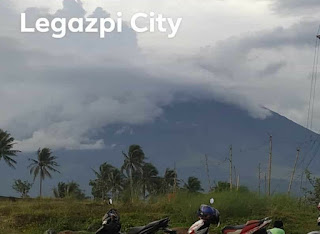According to the Commission of Higher Education (CHED), mentoring
should be provided as student support and counseling (CHED, 2016) . A classical mentor is someone “who oversees
the career and development of another person, usually a junior, through
teaching, counseling, providing psychological support, protecting, and at times
promoting or sponsoring” (Bierema LL, 2002) .
Online mentoring, also known as e-mentoring or computer virtual mentoring,
is an innovative twist to traditional mentoring. It is defined as the merger of
mentoring with electronic communications to develop and sustain mentoring
relationships linking a senior individual (mentor) and a lesser skilled or
experienced individual (protégé) independent of geography or scheduling
conflicts (Rowland, 2011) .
Online mentoring reduces the distance between
a mentor and a protégé, and breaks the barriers of geography, time and expense. Collaborative learning through interaction with
others requires learners to engage actively in idea exchange and meaning negotiation
by looking at and reflecting on the multiple perspectives of fellow students (Murphy KL, 2005) .
The roles of the mentors in the collaborative
virtual learning environment (CVLE) are identified as supporters,
collaborators, editors, friends, evaluators, teachers, leaders and role models (Fonga NS, 2012) . Kang, Yoo and Park (Kang M, 2012) identified four phases of a mentoring
program, mainly (1) preparing, (2) matching, (3) being a mentor and (4) ending
a relationship.
Mutual respect, trust, and comfort are
essential components of this relationship and must be allowed to evolve
naturally. Both parties must be committed
to the relationship, and expectations must be articulated. Successful mentoring involves frequent and
regular interaction (Bierema LL, 2002) . I would consider HealthXPH as online
mentoring, as more experienced individuals share positivity and expertise
freely thru their digital presence. On
#HealthXPH tweetchats, there is a safe space for healthcare workers, teachers,
trainers, policy makers, students and patients to express their thoughts, share
their experiences and develop their own opinions about issues on health and our
healthcare system. The #HealthXPH
tweetchats occur every Saturday with participants committed to the relationship
and social online interaction.
Join us on #HealthXPH as we discuss the
merits of online mentoring:
T1.
For what purposes/situations would online mentoring be applicable?
T2.
What would be the risks and benefits of online mentoring?
T3. Give
examples of successful online mentoring.
References
Bierema LL, M. S.
(2002). E-mentoring: Using Computer Mediated Communication to Enhance the
Mentoring Process. Innovative Higher Education, Vol. 26, No. 3. Retrieved
from https://www.insala.com/e-mentoring.pdf
CHED. (2016). Policies,
Standards and Guidelines for the Doctor of Medicine Program. Quezon City:
CHED Memo 18 series of 2016. Retrieved from
https://ched.gov.ph/wp-content/uploads/2017/10/CMO-18-s.-2016.pdf
Fonga NS, M. W. (2012). The
Roles of Mentors in a Collaborative Virtual Learning Environment (CVLE)
Project. Procedia - Social and Behavioral Sciences 66, 302 – 311.
Retrieved from
https://www.sciencedirect.com/science/article/pii/S1877042812052573
Kang M, Y. Y. (2012).
Analyzing online mentoring process and facilitation strategies. Procedia -
Social and Behavioral Sciences 46, 5158 – 5162. Retrieved from
https://www.sciencedirect.com/science/article/pii/S1877042812021362
KN, R. (2011). E-Mentoring:
An Innovative Twist to Traditional Mentoring. J. Technol. Manag Innov.
2012, Volume 7, Issue 1, 229-237. Retrieved from
https://www.jotmi.org/index.php/GT/article/view/art246
Murphy KL, M. S.‐D. (2005).
A Constructivist Model of Mentoring, Coaching, and Facilitating Online
Discussions. Distance Education, 26:3, 341-366. Retrieved from
https://www.tandfonline.com/doi/abs/10.1080/01587910500291454








